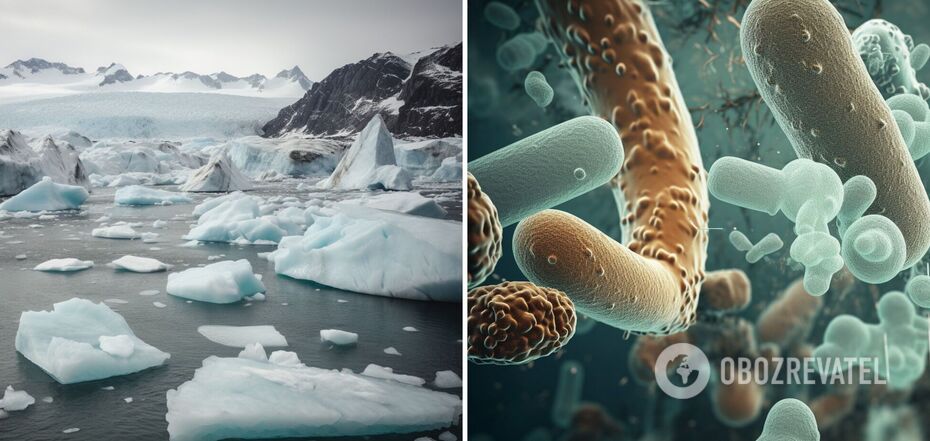Life
Arctic glaciers teem with "zombies": scientists make unexpected discovery
At first glance, the glaciers of the Arctic seem completely lifeless. But they are not. Many microscopic life forms can be found in the ice cover of Greenland and Iceland. Like seasonal zombies, many of these organisms sleep through the winter, waking from their frosty slumber only when things begin to thaw in summer.
Science Alert reported on the incredible diversity in the Arctic permafrost, which not long ago even scientists had no idea about. Now they are making some pretty gloomy predictions about the future of these microorganisms because of a warming climate.
According to microbiologist Alexander Anesio of Aarhus University in Sweden, up to 4,000 different species can be found in a small puddle of meltwater on a glacier. These include bacteria, fungi, viruses, and algae. "It's a whole ecosystem that we didn't know existed until recently," he said. When the researchers studied in detail the ice and snow on two glaciers in Iceland and Greenland in mid-to-late summer, more than half of the bacteria they found were active. The rest remained inactive or were dead.
However, when all these organisms were placed in warmer conditions, most of the dormant ones revived, regained their ability to read genes and produce the building blocks of amino acids. The findings from such studies suggest that microbial communities on snow and ice can respond quickly to changes in ice melt.
But while adaptation to climate change is generally considered a good thing at least at the species level, it is also true that an abrupt change at the level of one organism can destabilize the entire system. Future climate change is expected to bring more precipitation and winter thaws to the Arctic, and some microbes have already begun to thrive in the slush.
Snow algae, best seen in Greenland's meltwater, is a deep, dark purple color, and in recent years, scientists such as Anesio have noticed that patches of this color have begun to spread. The darker appearance of snow and ice means that such a surface absorbs more sunlight, which in turn speeds up melting by 20 percent.
Meanwhile, snow algae are not accounted for in modern climate models. And it is the inherent lack of microbes in the ice that is just one explanation for why Greenland's glaciers are actually melting faster than such a model suggests. A previous study, for example, showed that adding water to the snow cover for two months resulted in a 48% increase in snow algae. After just three days of thawing in the lab, some samples from the current study contained 35% more active microbes than before.
"Very importantly, our results show that glacial microorganisms are able to respond to short-term melting events occurring on a time scale of hours to days, which is short enough that periodic melting at the surface of glaciers could potentially affect the functioning of glacial ecosystems. biogeochemical cycles," the scientists write.
But their forecast indicates that increased warming precisely in winter will become widespread with consequent climate change. And this may entail ecological changes in the glaciers.
Earlier OBOZREVATEL told about the alarming scientists record of the temperature of the world's oceans.
Subscribe to the channels of OBOZREVATEL in Telegram and Viber to keep up with the latest news.




























